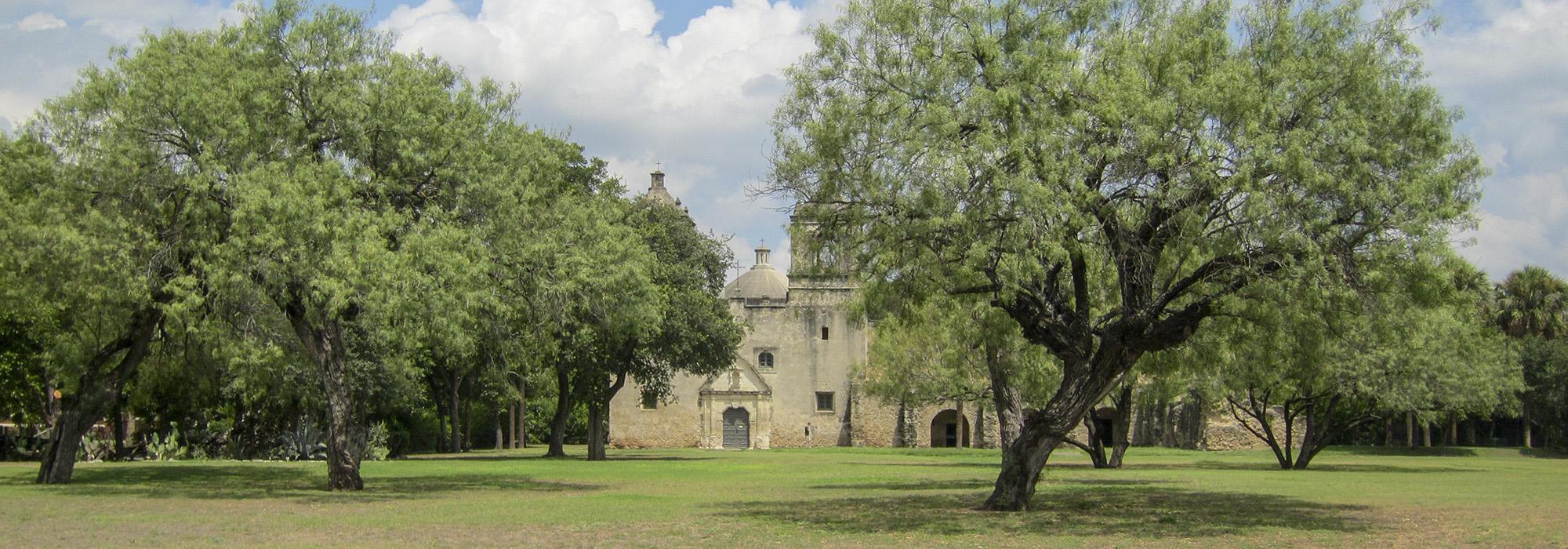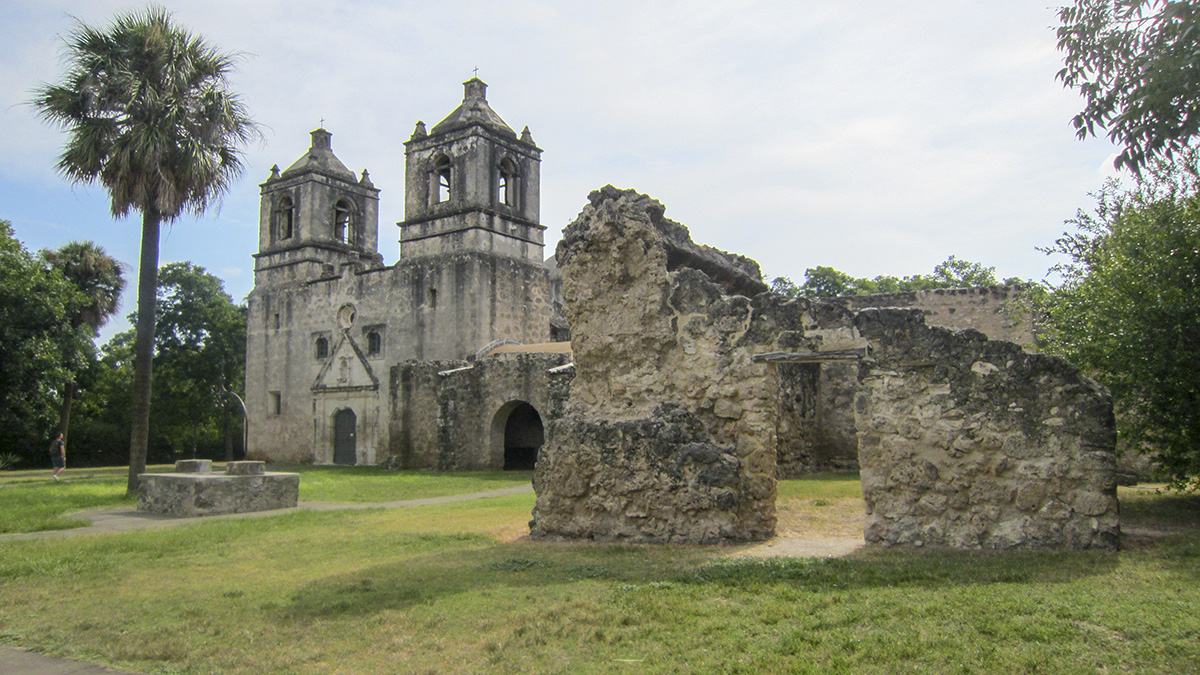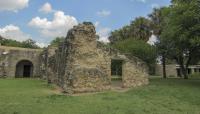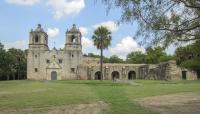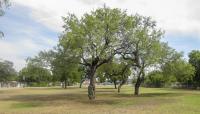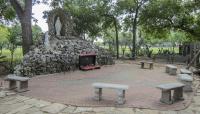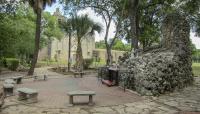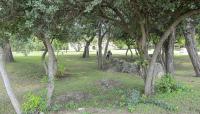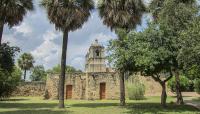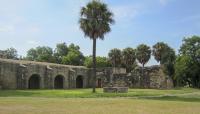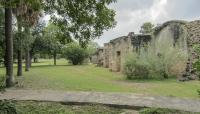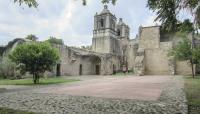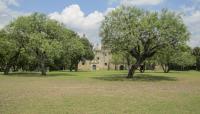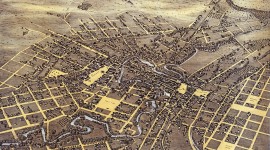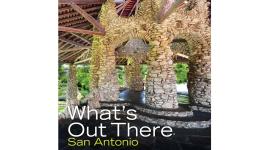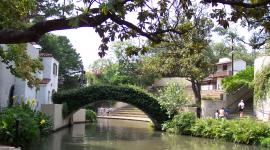Landscape Information
Founded by Franciscan friars in 1716 as Nuestra Señora de la Purísima Concepción de los Hainais in East Texas, in 1731 this mission was relocated to its current position along the San Antonio river, just south of what is now the King William Historic District. Constructed over fifteen years and dedicated in 1755, the limestone, cruciform church is considered one of the best preserved Spanish colonial structures in the United States. Concepción's standing structures include a sanctuary, nave, convento (convent), and granary. Traces of original painted frescos still exist on the buildings' facades. Restoration efforts in 1988 revealed artwork along the walls and ceiling of the convento.
Today, the 21-acre Concepción Park, comprised of lawn, shade trees, and a playground, abuts the river to the west and mission to the east, providing connectivity between the two. In 2015 the San Antonio River Foundation (SARF) developed River Return, a “portal” at the entrance to Concepción Park. Borrowing design elements from the Mission, Philadelphia environmental artist Stacey Levy, in collaboration with Rialto Studio, designed River Return as a series of outdoor rooms with limestone walls of undulating heights, mimicking the flow of water. Concrete paving is etched with water- and fresco-inspired patterns, and trails lead to the mission site. Mission Concepción was designated a National Historic Landmark in 1970, and is a contributing feature of the San Antonio Missions National Historical Park, listed in the National Register of Historic Places in 1978. The four San Antonio Missions, along with the Alamo, became a UNESCO World Heritage Site in 2015.



